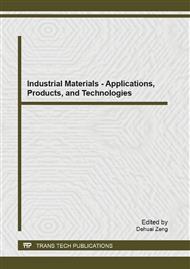p.196
p.201
p.206
p.210
p.214
p.218
p.222
p.226
p.233
Analysis of Carbonization Mechanism in ULCS Continuous Casting and Control Measures
Abstract:
In this paper, the carbonization mechanism in ULCS continuous casting was discussed. It was found after analysis that carbonization was influenced by three points (the contact of powder slag layer and molten steel, the carbon pick up of carbon-rich layer and carbonization in mold). At the same time, some measures were put forward (the use of exothermic cast-on mold powder, the content of the free carbon should be reduced in the mold powder, carbon blacks is used as carbonaceous material, the use of carbon-free mold powder, stabilizing CC operation, adding MnO2 to mold powder, viscosity of mold powder should be enhanced appropriately).
Info:
Periodical:
Pages:
214-217
Citation:
Online since:
August 2013
Authors:
Keywords:
Price:
Сopyright:
© 2013 Trans Tech Publications Ltd. All Rights Reserved
Share:
Citation:


